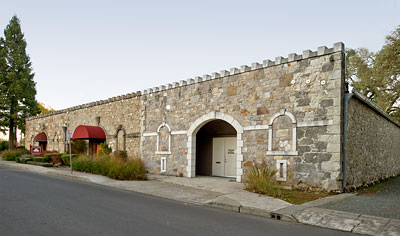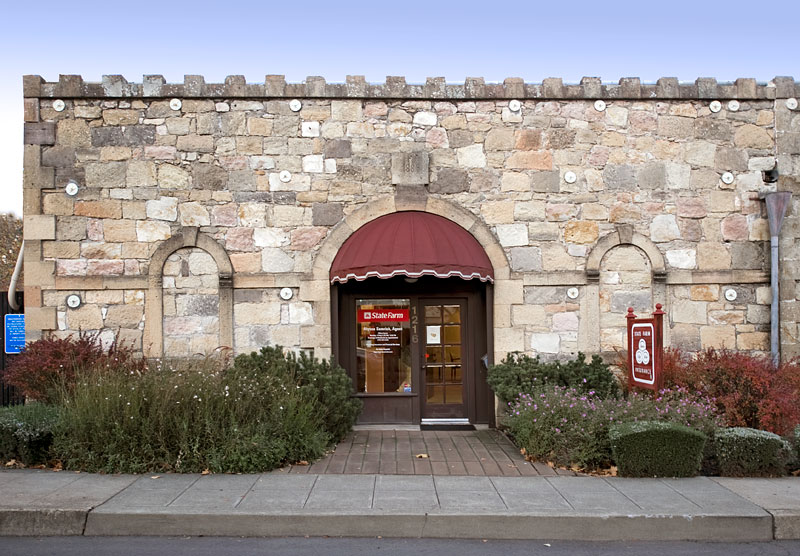National Register of Historic Places in Napa County
IRS Bonded Warehouse
1216 Church Street
St. Helena
Built 1878
Wine-making began in the Napa Valley in the 1860s and soon became the leading agricultural pursuit. Grapes grew especially well in the hills near St. Helena, which established itself as the service center for a large number of vineyards.
In 1877, when a change in federal tax law established special bonded warehouses in which grape brandy could be stored for up to three years without being taxed, the St. Helena Viticultural Club authorized construction of a large bonded warehouse in downtown St. Helena. The capacity was about 25,000 gallons. The construction material, unfinished stone, was typical for industrial and commercial buildings in 19th century Napa Valley.
Napa County wine production doubled during the 1880s, and brandy-making kept pace. Distilleries in the St. Helena area led the way, accounting for over two thirds of the county's output. Warehouse capacity was inadequate.
Because the law restricted the number of bonded warehouses, the vintners decided to expand the building. In 1881, they built a rear addition that more than doubled the capacity. In 1882, they added another section that doubled capacity again. In 1889, they increased the size for a third time.
By the end of the 1880s, over-production prices to drop. Phylloxera began to spread in local vineyards forcing growers to replace nearly all their vines. Brandy production dropped in the 1890s, reducing the need for large storage facilities.
The importance of the bonded warehouse began a slow decline. Shortly after 1900, the warehouse had enough excess capacity to allow brandy to be removed from the latest addition and stored only in the older sections of the building.
In 1919, the United States Congress passed the 18th Amendment to the Constitution which prohibited the "manufacture, sale, or transportation of intoxicating liquors..." In 1923, the last bonded brandy was removed to San Francisco.
The building was subsequently used for general storage, light industry and offices. In the 1940s, an automotive repair shop occupied the original part of the building.
Source: Adapted from the NRHP nomination submitted in 1995.

